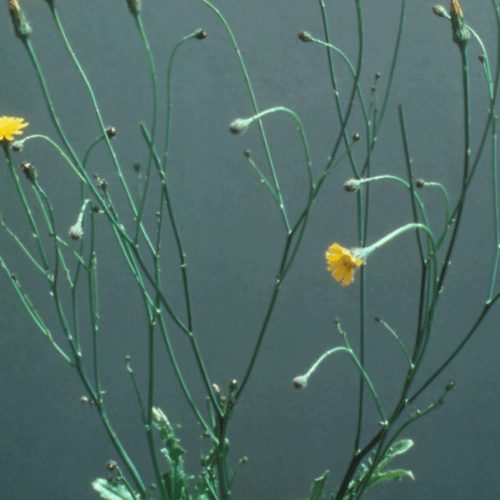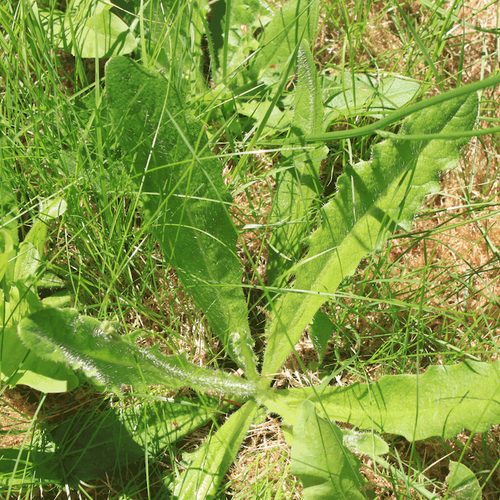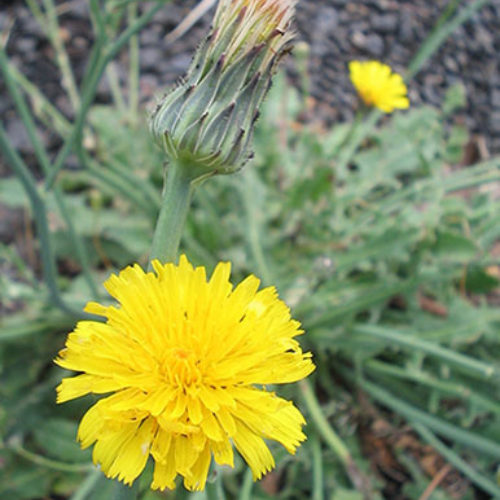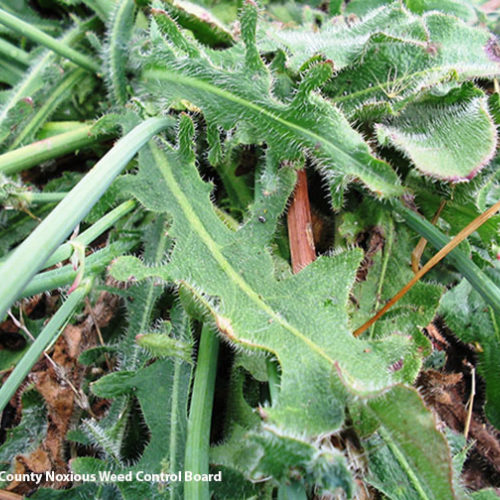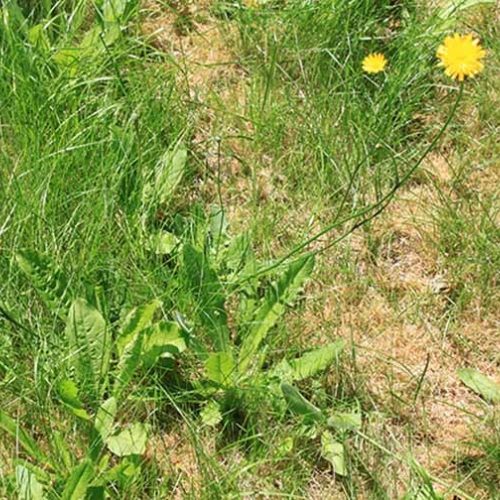Common Catsear
Hypochaeris radicata
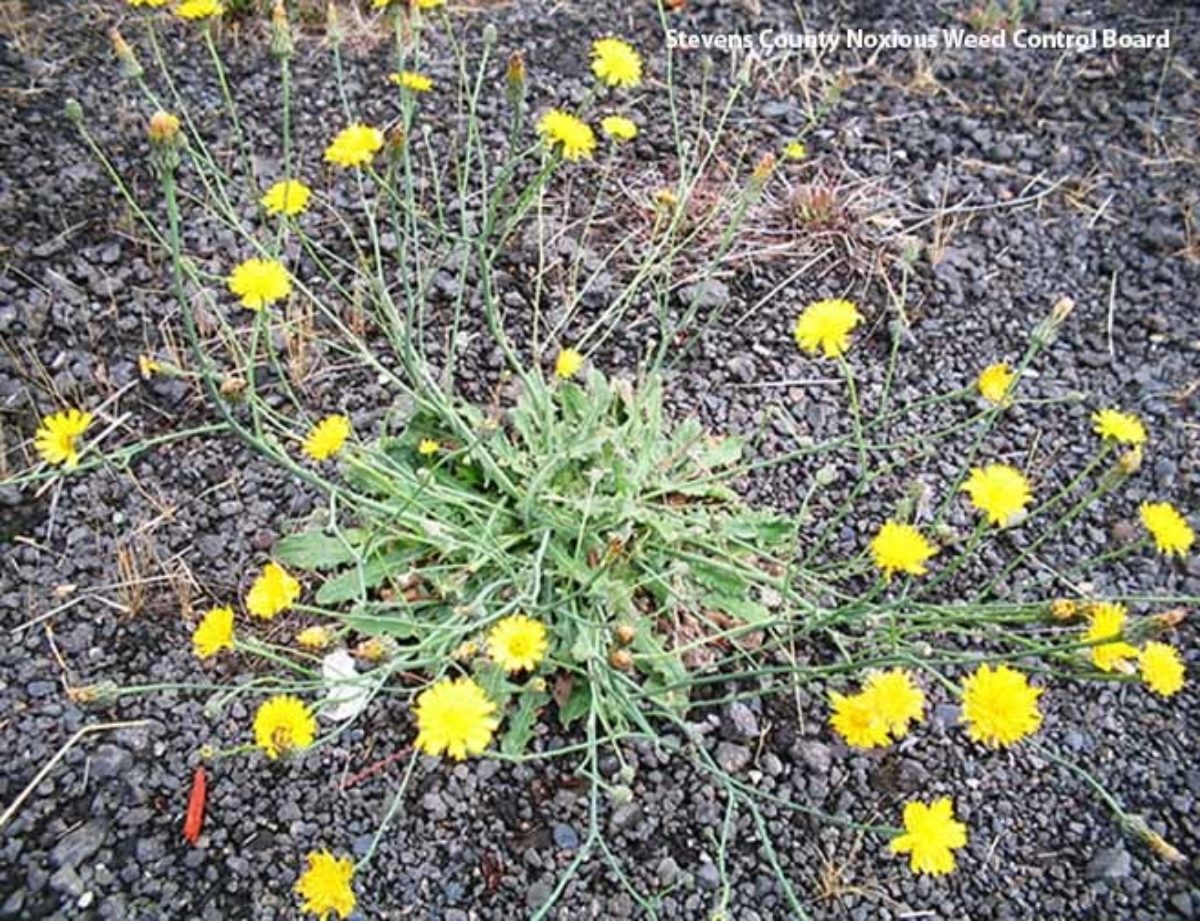
Family: Asteraceae
Other Common Names: hairy cat's ear, flatweed, false dandelion, spotted catsear
Weed class: C
Year Listed: 1988
Native to: Europe, Western Asia and Northern Africa
Is this Weed Toxic?:
livestock
Why Is It a Noxious Weed?
Common Catsear is a serious weed in lawns, pastures and waste areas. It is extremely aggressive in lowland pastures and lawns. It is also thought to be poisonous and is believed to be the cause of Australian Stringhalt in horses. Common catsear was changed from a Class B to a Class C noxious weed in 2013.
How would I identify it?
General Description
Common Catsear is a perennial with rosettes of leaves, a clump of basal leaves, from a woody base. It has upright to somewhat upright stems typically leafless and branched that have a milky juice when broken.
Flower Description
Flowerheads several at the ends of stems. Flowerheads are dandelion-like, made up of all yellow ray flowers (ligulate), 1 to 1.5 inches in diameter. Each flowerhead has many green bracts its base.
Leaf description
The leaves are rough, hairy with lobed or wavy-margins. Leaves are 1.2 to 13.8 inches long by 0.2 to 2.8 inches wide.
Stem description
The stems are hollow and exude white milky sap when broken or cut.
Fruit Seed Description
Seeds with hairy bristles (pappus) on one end to aid with wind dispersal.
May Be Confused With
May be confused with common dandelion, Taraxacum officinale. If you need help with plant identification, please contact your county noxious weed coordinator.
Where does it grow?
Common catsear grows in disturbed areas, lawns, roadsides, pastures, waste areas, gardens and seed fields. Please click here to see a county level distribution map of common catsear in Washington.
How Does it Reproduce?
Common catsear reproduces by seed, crown and root sections.
How Do I Control It?
Mechanical Control
Scattered plants in lawns can be spaded out below the crown in early spring or as soon as the leaves appear. A badly infested field should be cultivated 1 to 2 years before reseeding.
Cultural Control
Rotating legumes with row or cereal crops is the most practical way of controlling common catsear in legume fields.
Herbicide Control
Please refer to the PNW Weed Management Handbook, or contact your county noxious weed coordinator.
For More Information
See our Written Findings for more information about common catsear (Hypochaeris radicata).
Whatcom County NWCB Fact Sheet on common catsear
Control Options for common catsear from Whatcom County NWCB
Common catsear information from the book Weed Control in Natural Areas in the Western United States



